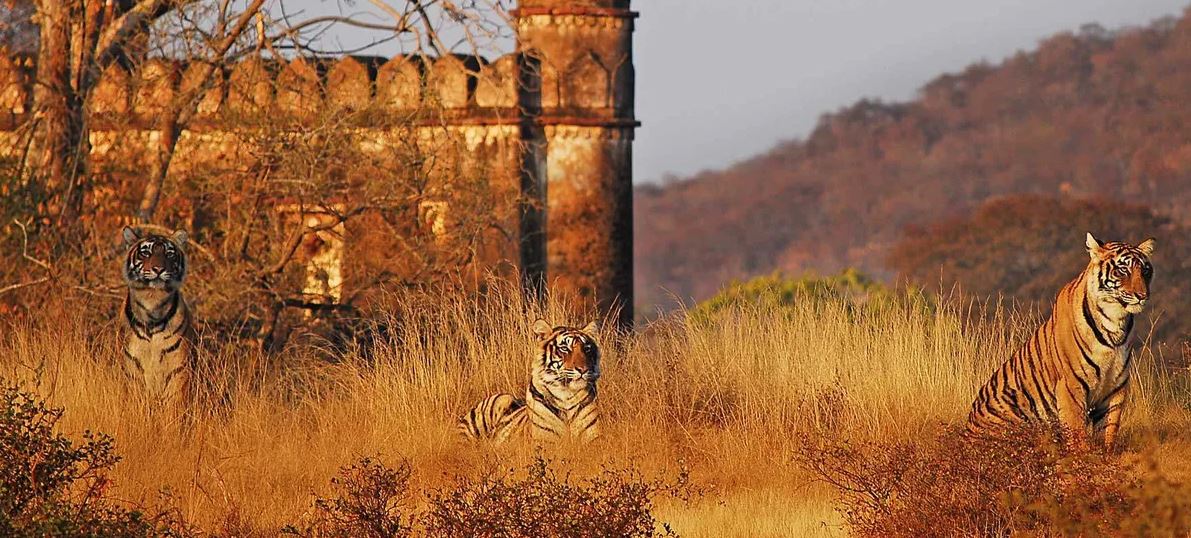Ranthambore National Park is one of the best and popular wildlife destinations in India. Located in Rajasthan, this famous park is a paradise for nature lovers and wildlife photographers. It was once a royal hunting ground and is now a protected area that attracts visitors from around the world. The park is most known for its tiger population. Visitors arrive with the desire to see this magnificent creature in its natural environment. In addition to tigers, the park boasts a diverse range of animals, birds, and reptiles. The dry deciduous forests, open grasslands, and ancient ruins inside the park add to its charm.
If you’re visiting Ranthambore for the first time, you’re in for an exciting adventure. But to make the most of your safari, it’s helpful to know what to expect and how to increase your chances of seeing wildlife. This blog will guide you through simple yet useful tips to help you have a memorable wildlife spotting experience.
Tips for the Best Wildlife Safari Experience in Ranthambore
- What to Expect on a Ranthambore Safari
You can opt for the Ranthambore safari India anytime between November and June. However, the summer months (April to June) offer better chances of seeing tigers as animals come out to drink water. These months are hot and but are highly rewarding for wildlife lovers. Winter months (October to March) are cooler and more comfortable. While tiger sightings are still possible, animals may stay hidden in the thick foliage. No matter the season, safaris are offered in the morning and evening slots, and wildlife spotting is at its best during these hours of the day.
- Choose the Right Safari Zone
Some zones in Ranthambore are known to have better tiger sightings. Zones like 2, 3, 4, and 6 are often recommended for first-time visitors. They offer good wildlife activity along with beautiful landscapes. While doing your Ranthambore safari booking, keep zone selection in mind. Try to book your safari as early as possible to get access to these popular zones. If your preferred zone is not available, remain flexible. Every zone has something unique to offer, and wildlife is unpredictable.
- How to Spot Wildlife Like a Pro
Pay attention to sounds in the forest. Alarm calls from deer or monkeys often indicate the presence of a predator nearby. These calls are one of the best signs to look out for during your safari. Look for signs on the ground like pugmarks or fresh droppings. These clues help guide track animal movement. Keep your eyes open and scan the landscape carefully; sometimes, animals blend in with their surroundings. Patience is key. Wildlife sightings are not guaranteed, and part of the thrill is in the wait. Bring a pair of binoculars for distant views and a camera with a zoom lens if you enjoy photography.
- Follow the Safari Etiquette
Always stay silent during the safari. Loud voices or sudden movements can scare away animals. Respect the calm of the jungle. Never feed or disturb the animals. Engaging in this behavior can pose risks to both your safety and that of the wildlife. Allow the animals to continue their natural activities undisturbed. Always pay attention to your guide; they are knowledgeable about the landscape, animal habits, and safety measures. Also, be courteous to fellow travellers and avoid blocking their view.
Tiger Sighting is a Bonus! Enjoy the Overall Experience
It is natural to hope for a tiger sighting during the Ranthambore safari. But don’t let that be your only goal. Ranthambore’s beauty lies in its diversity. Notice the birds flying above, the butterflies around you, and the trees that tell stories of the forest’s age. A safari is not just about the big cats. It’s about connecting with nature in its purest form.
